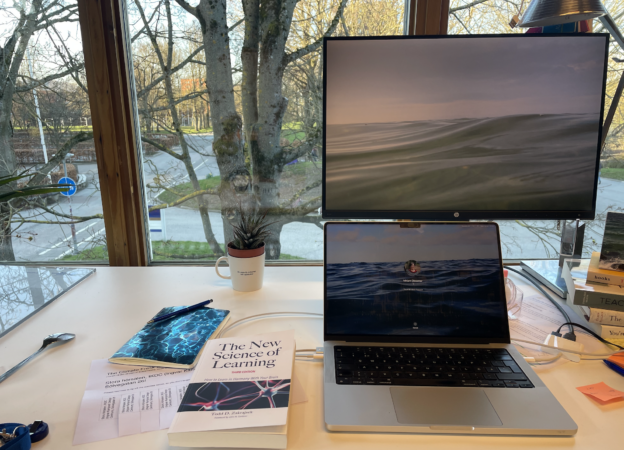I’m back to browsing the “menu” in my new favorite book, “The New Science of Learning: How to Learn in Harmony with Your Brain” by Zakrajsek (2022). If you haven’t read the first blog post about the book, you might want to read that one first for context.
I am wondering if this book might make good course literature for our courses for teachers, so today I will actually start looking at the remaining chapters a bit more systematically instead of just jumping to wherever my fancy takes me. First up:
Learning from multiple perspectives (Part 1, chapter 1)
This is a really interesting chapter with many good points about people coming together with different perspectives based on different life experiences, and how for most issues there isn’t only one right and one wrong perspective, but that most issues are more complex than that, and that we never know what is going on in other people’s lives so “Be kind. Always.” (which I have a print of at my desk, too, but from a different source than cited in the book — mine is a print of the quote that Noora from SKAM has on her wall! :-D)
There is a section on first-generation students, and while all the points are good and valid, I find it a weird that there isn’t also a section on continuing-generation college students, pointing out the privileges they are most likely not aware of, and how they can use their knowledge of the hidden curriculum and more generally the culture in higher education to support others. Maybe this is something that they are supposed to get from reading the part on first-gen students, but I feel like that transfer is too far and that I — especially after having been encouraged to pick and choose in this book as if it was a menu in a restaurant — would probably have skipped that part since it did not concern me personally. I might actually have skipped the whole rest of the chapter, even though it is on topics that I find super interesting and relevant and have made sure we include in our courses for teachers, e.g. microaggressions and stereotype threat. So for me, the advice in the foreword to be strategic about what you want to read and in what order was actually one that made me much more excited about reading the book than if I had tried reading it cover to cover (both now, and, I imagine, had I read this as an incoming student).
Discovering yourself as a learner (Part 1, chapter 2)
“Sometimes what you want and what is best for you at that time are the same”. Whelp. Mostly it is not! :-D So how do we get ourselves to actually do what we set out to do, even though we might not feel like doing it NOW and tell us that doing it later will be just as well (even though we know we will have come with a new excuse by then and won’t do it later, either), or don’t feel like we can achieve it even if we tried, so we don’t try so we don’t fail? This whole chapter on self-regulation is actually really useful and interesting!
Developing your learning strategy (Part 1, chapter 3)
I don’t know why I didn’t pick up on this chapter yesterday already when I was “browsing the menu”, because this is a topic I really like talking about. I know, for example, that gamification works super well for me. As of today, I have a 954 day streak of Duolingo (in four different languages, but still) and I am not likely to break it anytime soon, unless I get super seriously ill or something horrible happens to my phone.
In this chapter, concepts like SMART goals and the salami tactic of breaking large goals down into manageable chunks are introduced, and why they are good to set that way (for example because due to goal creep and avoiding overwhelm). And then there are practical strategy tips e.g. for how to set up and manage schedules, like for example to-do lists.
Then, there is a really interesting part on “effective communication patterns” with teachers. How to address them, what office hours are for, how to not be annoying. There are a lot of cultural norms in place that not everybody might be aware of!
From here on, I only browsed the rest of the book. Not because it’s not worth reading properly, but because I am — again — on my way to a meeting and wanted to get the book and this post finished before. Gotta love deadlines! :-)
But to wrap up this blogpost: I am still convinced that this is a really really useful book for incoming students, and teachers! Maybe especially for our typical participant in the “introduction to teaching and learning” course, i.e. PhD students, who might benefit from this from a learner perspective as much as from a teaching perspective. And for experienced teachers, who might need a reminder that even though most of the content of this book is probably something they’ve been familiar with for a long time (or maybe not?), none of this is obvious to their students and might deserve to be made explicit — either by us, or by us recommending to read the book. So here we go: Go and read the book! :-)
Zakrajsek, T. D. (2022). The New Science of Learning: How to Learn in Harmony with Your Brain. Stylus Publishing, LLC.

Pingback: Recommended reading: "The New Science of Learning: How to Learn in Harmony with Your Brain" by Zakrajsek (2022) - Adventures in Oceanography and Teaching